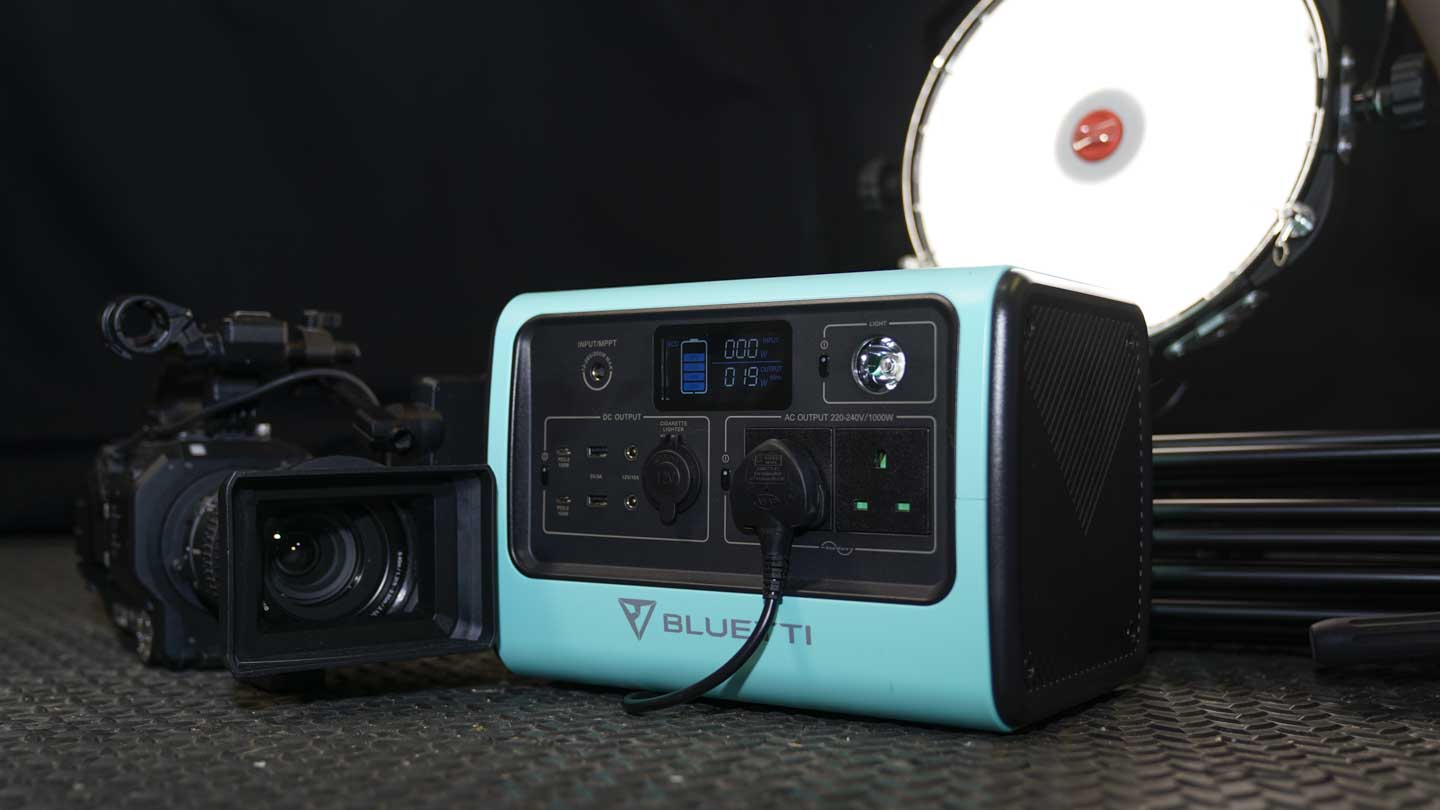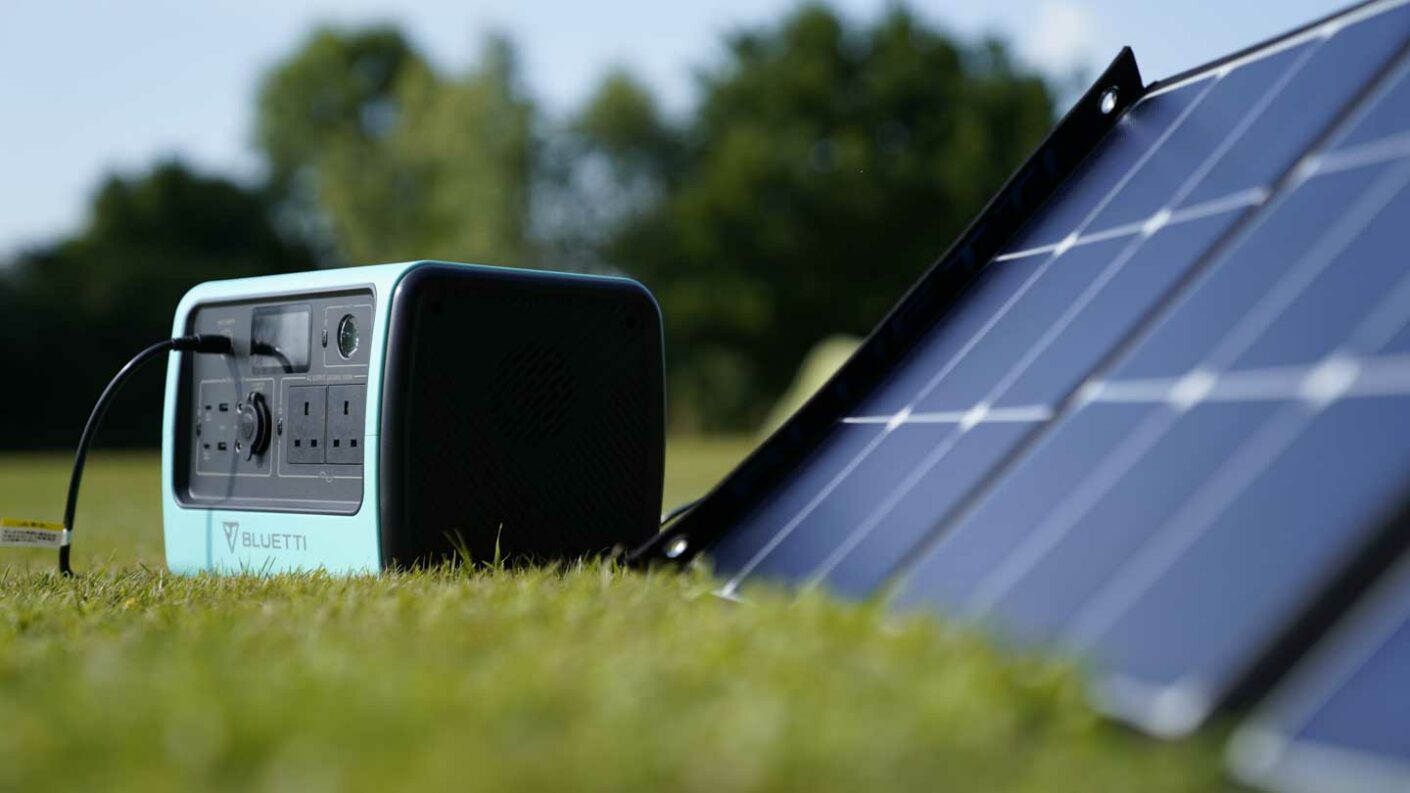The BLUETTI EB70 is in the mid-range of portable power stations that I’ve looked at, and its weight, at 9.7 kg, is heavy but not overly. Likewise, 32 x 21.6 x 22.1cm is a decent size, and with a large carry handle on top, it’s very easy to transport.
In this review, I’ve looked at the turquoise version of the portable power station, but it’s also available in black or blue. The turquoise colour is slightly peculiar, but it does make it stand out. Usefully it makes it easy to locate when thrown into the back of the car with a selection of black bags; there’s no possibility of missing it.
What I liked from the outset with the BLUETTI EB70 is the simplicity of its layout. First of all, across the top front of the station, you have the power input for the solar panels or the option to mains charge or charge from your car battery. Next is the clear LCD that shows the amount of charge left in the battery, the power input into the panel, and the power drawn from any devices plugged in. Like all of these portable power generators, there’s a bright LED light that offers plenty of unfocused illumination.
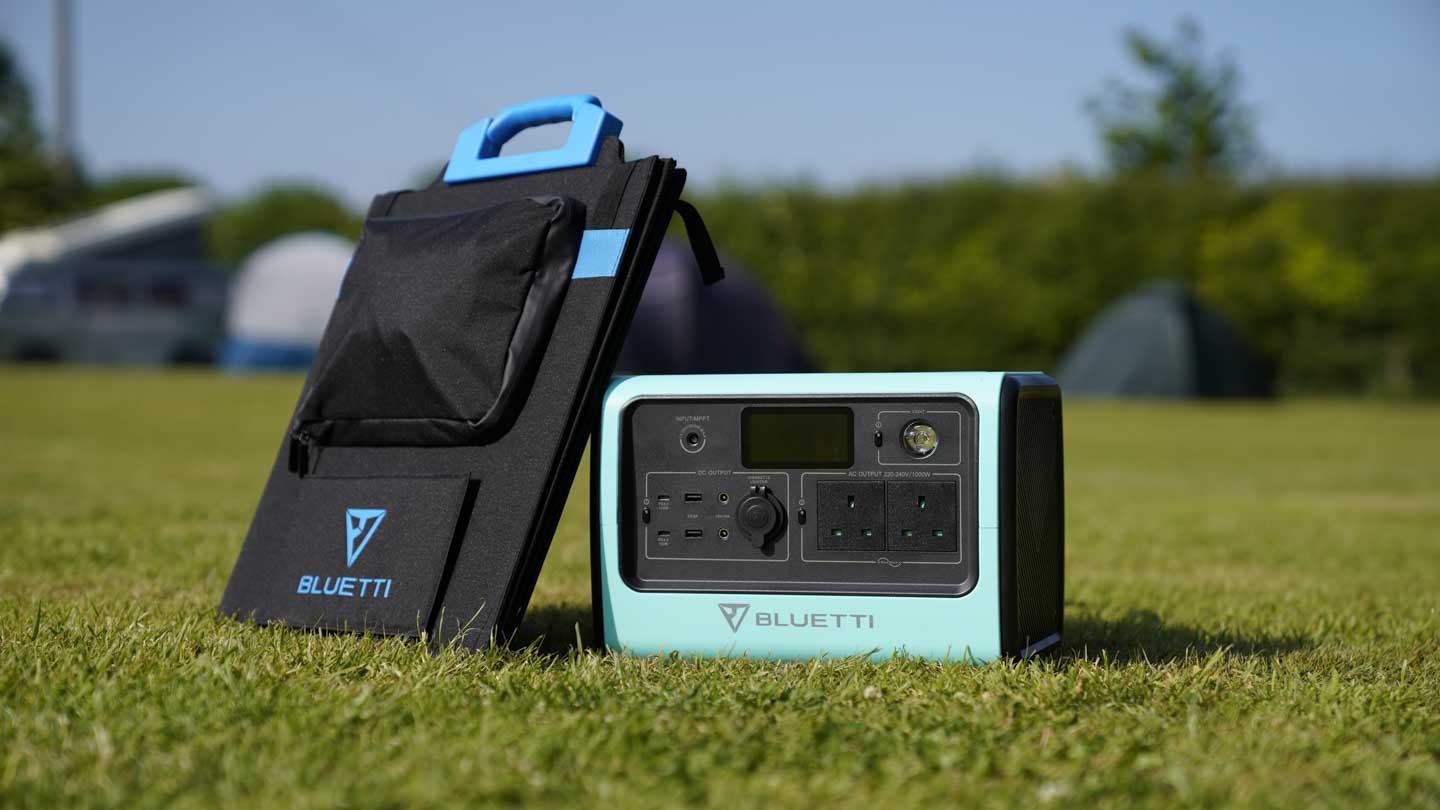
When it comes to the all-important power outlets, these are divided into DC outputs and AC outputs. On the left, you have a 2 USB Type-C PD rated at 100W, more than enough to power MacBook Pro (2019) and later directly. There are also two standard USB outputs (5V, 3A), a carport/cigarette lighter port (DC 12V, 10A), then a new one on this type of device to me, at least, is a 12V/10A DC (5.5 x 2.1 mm)
Then, you have your AC sockets on the bank on the right-hand side. These are the standard UK type (these vary depending on territory) you would find within your home and on the wall.
Other than what you see on the front of the BLUETTI EB70, the rest of the unit is very simplistic. The sides of the case are vented to allow plenty of cooling ventilation; the fans kick in when in use, especially with the MacBook Pro and monitor connected, but the fans are relatively quiet even then. The back of the case is plain, as it’s the underside. On top; you have the carry handle and a wireless charging pad for your mobile phone or another wirelessly chargeable device.
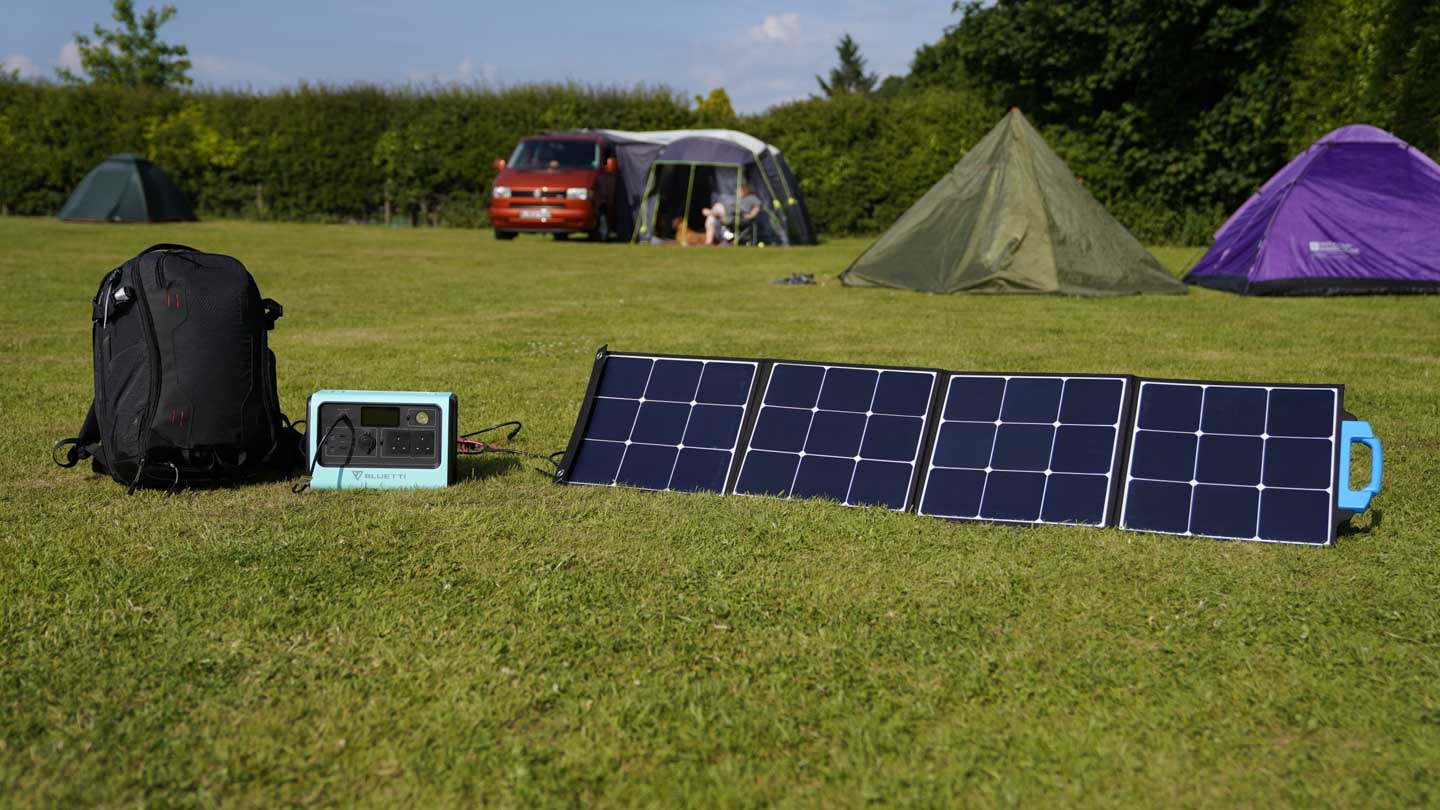
In use, I found this wireless charging pad extremely useful and not just for charging my mobile phone. The pad was a great place to leave the phone during the shoot to ensure that it remained charged. The only real issue is that everyone discovered the same thing, so there was a little hustling for the charging space. Just as a note, only one wireless device can be charged at a time.
Used on a day’s video shoot, and I had my standard kit plugged in. This consists of two Rotolight Anova Pro 2 lamps, one Sony FS7, a MacBook Pro (2019) and a BenQ 27-inch 4K as an addition on this occasion, along with something charging – checking the small screen showed a maximum power draw of around 200 W/h. This power draw essentially gave me about three and a bit hours of use, in reality, due to the computer’s internal battery and power-saving when using the camera, I was able to see it through six hours, excluding an hour or so for breaks and lunch.
In use I really liked BLUETTI EB70 because it was just straightforward to use, there’s nothing fiddly, it’s essentially like plugging into the mains. I like that all of the power outlets are on the front of the power station, making it quick and easy to plug things in and take things out without going around the side or repositioning the battery to access the sockets you need.
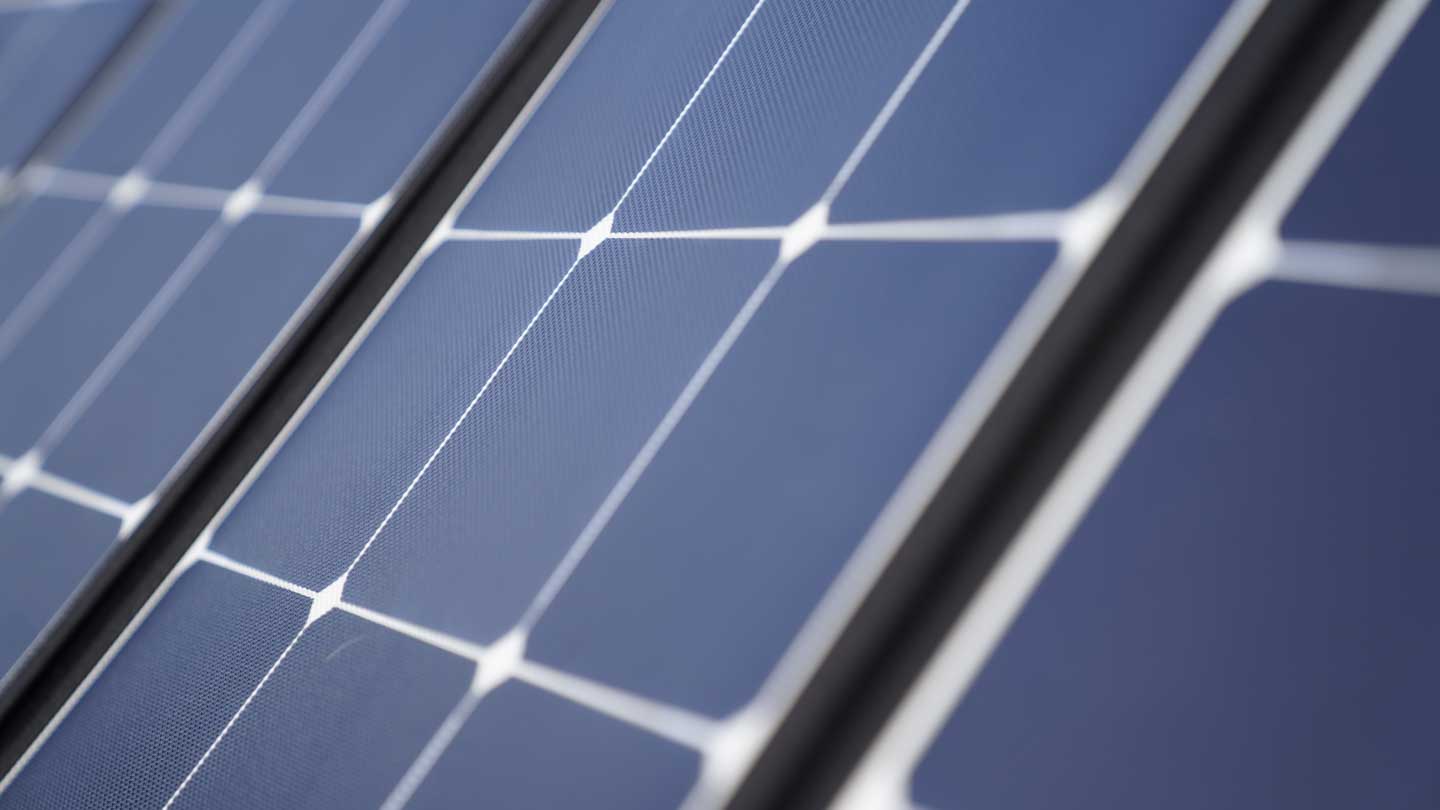
Throughout the day, I was also pleased with the number of devices that I could plug into the BLUETTI EB70 and how quiet it stayed even when the power draw was increased. As with other portable power stations, there is a maximum power draw of 1000W, so plugging in something like the Dyson air blade will max out the power output. Still, for most of the devices that you’ll be using as a photographer or videographer, the specifications of the BLUETTI EB70 should be more than enough.
Of course, the power station is just one part of the set-up in the review, the other part being the SP 120 solar panels.
The solar panel consists of four panels that concertina into a very neat package. Once unfolded the panel features two eyelets on one edge enabling it to be hooked over and tied to the side of a vehicle, wall or anything else that makes it easy for the panel to absorb the Sun’s rays. Alternatively, on the back of the panel are 4 velcroed into position legs that can be folded down.

Once the solar panel is set up, the cables can be taken out of the zipped pocket on the back and then plugged into the front of the BLUETTI EB70. On a sunny day, I found that an almost completely discharged BLUETTI EB70 could be recharged to 100% in between six and eight hours, depending on the brightness of the sun, it was also important to move the panels around as the position of the sun changed to the day.
On a cloudy day or days, it will take about a day and a half to two days, or twelve hours to fourteen hours, of sunlight to fully recharge a depleted battery.
The BLUETTI EB70 provides plenty of power, more than enough really for a day shoot, and it enables you to plug in all of those devices you need, such as a lighting camera and laptop. There are some features that really stand out, like the wireless charging pad but ultimately it’s just the ease of use and reliability.
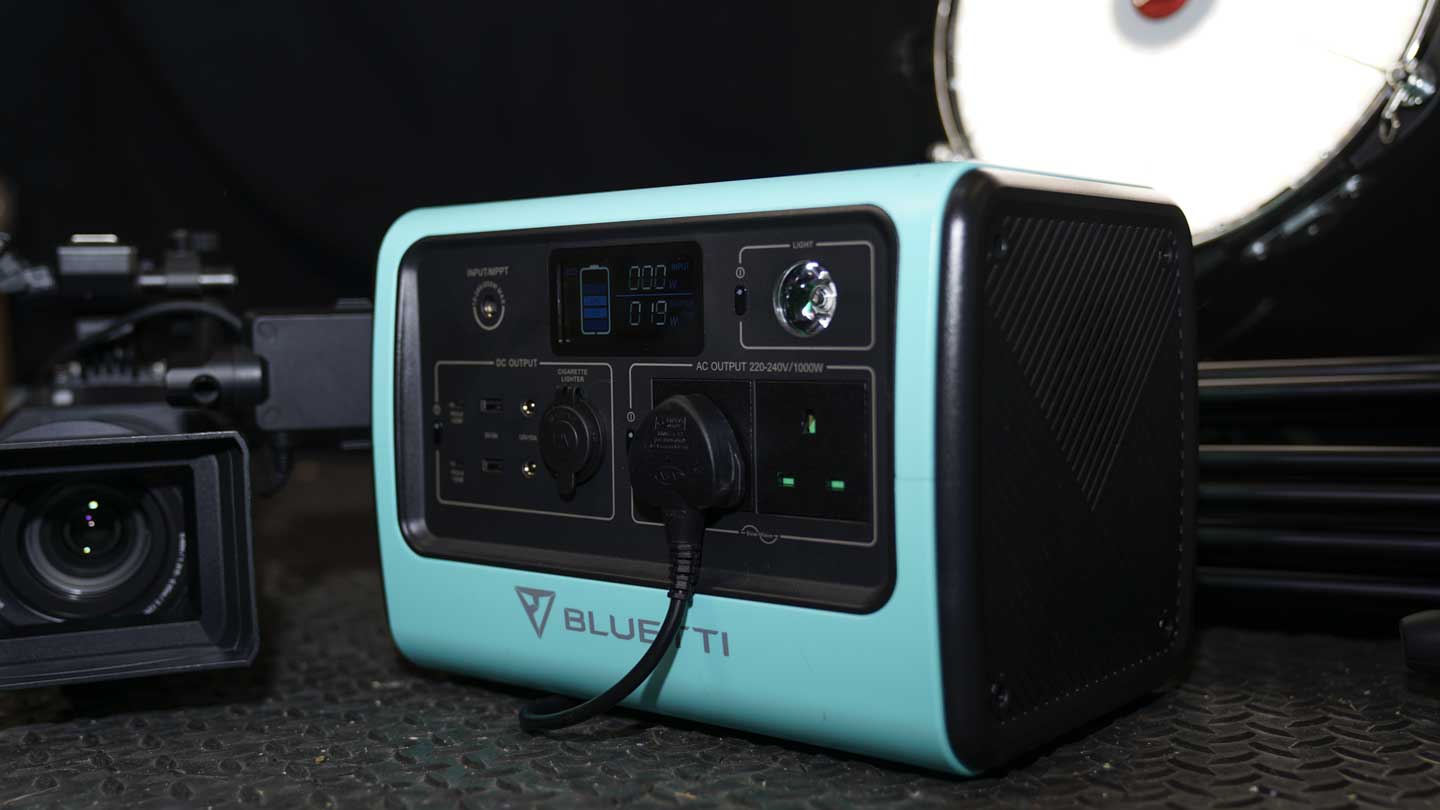
I also really like the design, even though the review unit is in turquoise; having all ports on the front of the case makes it easier and more convenient to use, especially when you’re moving the power station around on a shoot.
Ultimately for a single person shooting small productions, the BLUETTI EB70 is an excellent power solution. Photographers will find that the capacity of the BLUETTI EB70 is more than adequate for a full day shoot, if not more, probably an entire week, and you’ll be able to recharge your batteries for your flash, camera and lighting multiple times without the need to plug into the wall or recharge the power station.
Videographers will also benefit from the capacity of the BLUETTI EB70 and through two shoots it was handy to keep batteries charged up with the power station which I left charging in the car with the panels draped across the window screen.
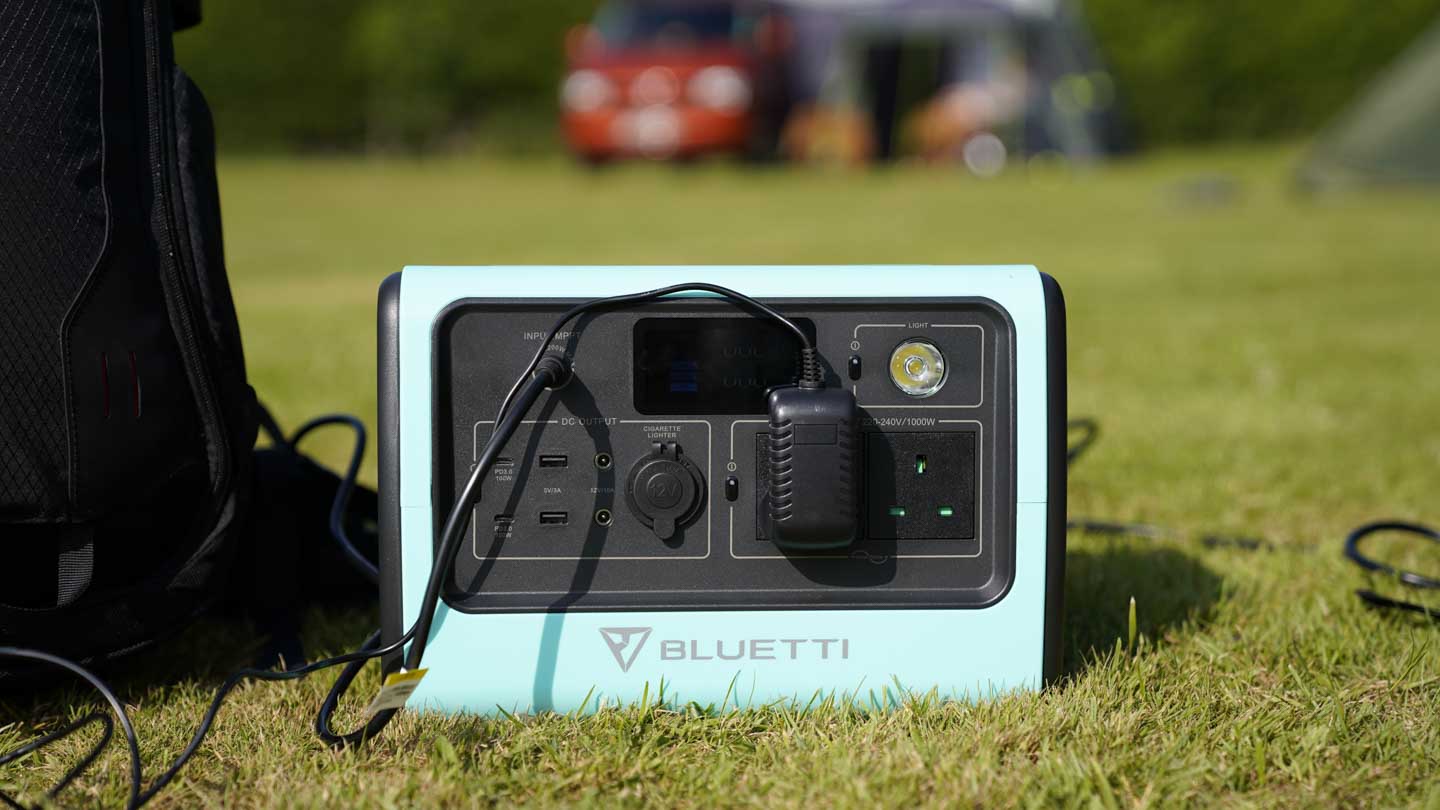
Solar panels are highly efficient and some of the best designed I’ve come across. Although it still takes between 6 to 8 hours to get a full charge on a sunny day. However, I found that topping up the charge through the day was the best solution, and on one shoot it provided the power for the day and I still came home with 40% capacity.
One of the hidden technology features of the BLUETTI EB70 is the battery technology inside. The battery cell of the power station is LiFePO4 which is much safer than other alternatives. This technology also has the advantage that it has a much longer life span than other battery technologies which will enable up to 2500 cycles to 80% capacity. This means that you could essentially use the battery every day for seven years.
